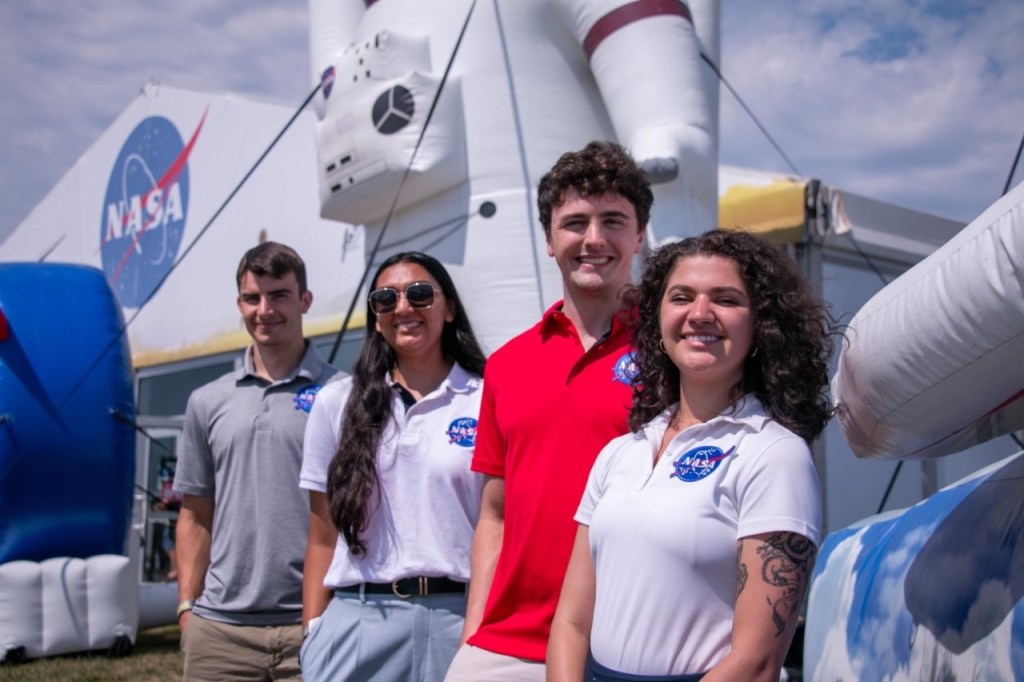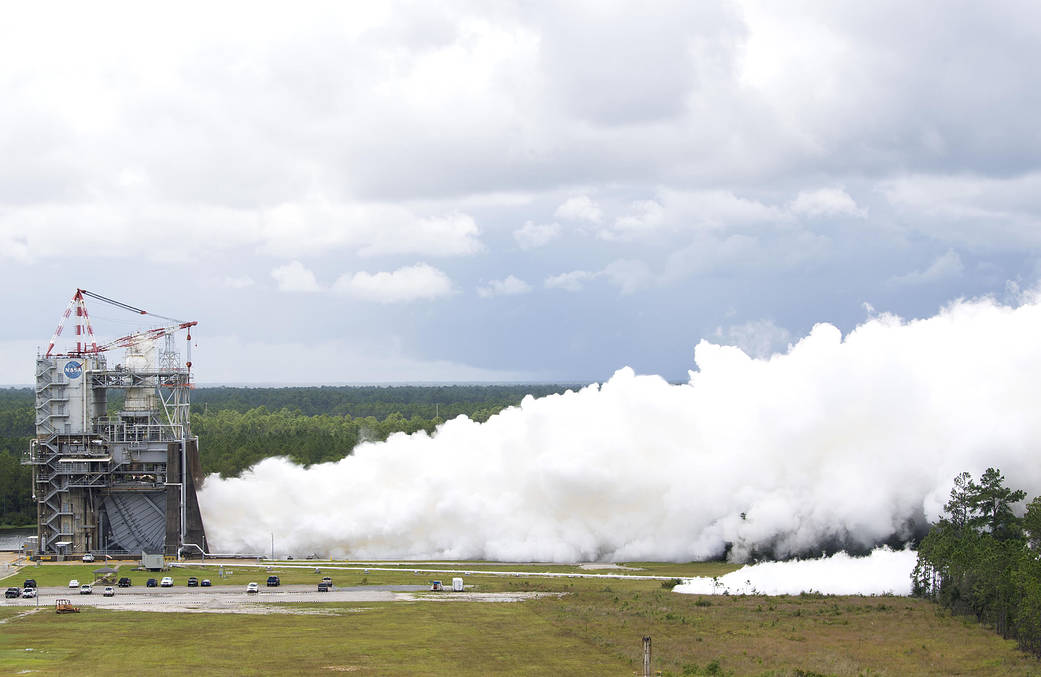NASA continued its steady march to deep space with another full-duration, 500-second test of an RS-25 engine Sept. 6 at Stennis Space Center near Bay St. Louis, Mississippi. The test was a certification hot fire of an RS-25 flight controller unit that will be used on a future flight of the agency’s new Space Launch System (SLS) rocket. It marked a sixth test of a 3D-printed pogo accumulator assembly, a critical component that dampens potential engine propellant pressure oscillations that can cause a rocket to become unstable in flight. In addition, it was the second test of an RS-25 main combustion chamber fabricated using a bonding technique called hot isostatic pressing (HIP), which saves considerable time and money over more traditional methods. The HIP process uses high pressure and heat to create bonds that can withstand extreme stress. It already has been used on main combustion chambers in two other Aerojet Rocketdyne engines. The hot fire was on the A-1 Test Stand at Stennis, which has been conducting RS-25 engine and component tests since January 2015. NASA began testing RS-25 flight controller units on the stand in March 2017. The RS-25 engines to be used for initial SLS flights are former space shuttle main engines, modified to operate at a higher power level needed for the larger, heavier SLS rocket. The new flight controller units are a key component of the modifications, serving as the “brain” of the engine to help it communicate with the rocket and to provide precision control of its operation and internal health diagnostics. Four RS-25 engines will help power SLS at launch, supplying a combined 2 million pounds of thrust and working in conjunction with a pair of solid rocket boosters to provide more than 8 million pounds of thrust. The SLS rocket is being built to return humans to deep space destinations, including the Moon and Mars. Exploration Mission-1 will test the new rocket and carry an uncrewed Orion spacecraft into space beyond the moon. Exploration Mission-2 will be the first flight to carry humans aboard the Orion spacecraft to deep space. In addition to testing RS-25 engines and flight controllers, NASA’s Stennis Space Center is preparing to test the actual SLS core stage for the first mission. The testing will involve installing the flight stage on the B-2 Test Stand and firing all four of its RS-25 engines simultaneously, as during a launch. RS-25 tests at Stennis are conducted by a team of NASA, Aerojet Rocketdyne and Syncom Space Services engineers and operators. Aerojet Rocketdyne is the RS-25 prime contractor. Syncom Space Services is the prime contractor for Stennis facilities and operations.
3 min read

























